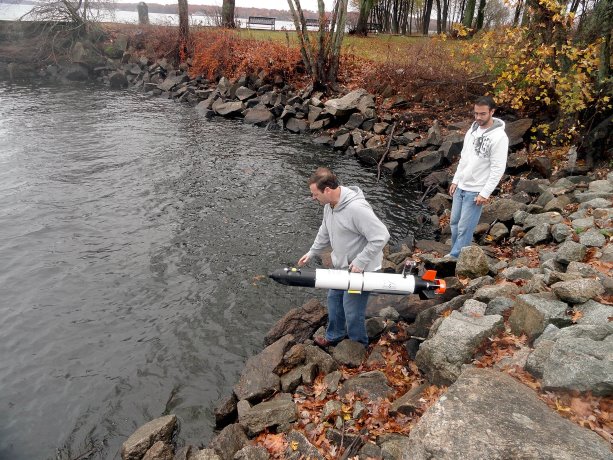It’s relatively easy to build support for cleaning up contaminated property in populated areas. Terry Long has chosen a tougher task — drawing attention to the ocean floor, including Canadian territory, littered with munitions and chemical weapons.
Long is a retired military engineer trained in munitions disposal and owner of Wentworth Environmental Inc. (WEI) with head office in Leitches Creek, N.S. Employing a team of experts, including many former military service personnel, the company specializes in a number of marine fields including harbour dredging, marine mapping and response services for Munitions and Explosives of Concern, which includes chemical weaponry. WEI offers its services worldwide, primarily to oil and gas exploration companies and government military commands.
"We’re currently doing a lot of work in the Baltic Sea for energy companies who need to know where the munitions are and how to route their operations away from them," says Long.
"It’s not just a matter of knowing where they are — munitions can drift several miles in any direction, so these pipelines really need to be out of the active zone."
While some munitions, such as sea mines, have been left on the ocean floor and forgotten since World War II, most of the munitions and chemical weapons the company is contracted to handle were deliberately ocean-dumped, a common practice prior to the 1970s. The deadly debris includes anything from explosives and radioactive material, to containers of nerve and mustard gas. However, even simple explosives such as TNT are also chemical hazards, leeching carcinogens into ocean waters.
How serious is the problem in Canada? Both U.S. and Canadian vessels carried out dumping along the Canadian coastline following WWII.
In Canada, trainloads of barrels were placed on ships at the end of their service lives and scuttled offshore. Details of many of the dumping operations following WWII are still classified as military secrets.
Long estimates that ocean dumping has created at least 3,000 dump sites off the coasts of Nova Scotia and Newfoundland alone. Ocean dump sites have also been identified off the coast of British Columbia.
While many of the chemicals dumped at sea were sealed in metal containers, lead or concrete, those barriers are breaking down and chemicals are finding their way into the human food chain, through contamination of fish and other marine life.
The solution is simple, says Long: "In most cases, if we remove the source, we remove the problem. Off-the-shelf-technology and military unmanned systems already exists to detect, map, recover and dispose of underwater munitions and the toxic waste they create."
Ultimate responsibility for the Canadian sites lies with the Department of National Defense, says Long. However, he notes that there’s little political will to tackle most of the known sites, unless problems associated with them are reported as acute.
When contracted to remove sea-dumped weapons, WEI relies on a combination of high-tech and talented human operators. Autonomous Underwater Vehicles use sonar, magnetometers and both video and still cameras to locate ocean dump sites. Remote Operated Vehicles (ROVs) can investigate specific sites and recover both munitions and containers of hazardous chemicals for later disposal.
While explosions provide an occasional dramatic finish for decades-old ordnance, most munitions meet a more mundane fate.
"We’ll use an ROV to transport the munitions to an offshore floating platform where they’re remotely cut into segments using metal saws, so they’re no longer capable of detonating," says Long. "
The metal is then recycled."
Long is also the founder and chairman of the International Dialogue on Underwater Munitions, a non-government organization promoting the creation of a United Nations binding treaty to clean up all classes of munitions — biological, chemical, conventional, and radiological — dumped in oceans and seas.
"We need to take ownership of and responsibility for these dump sites," he says. "Then create a plan to systematically clean them up."



Recent Comments
comments for this post are closed